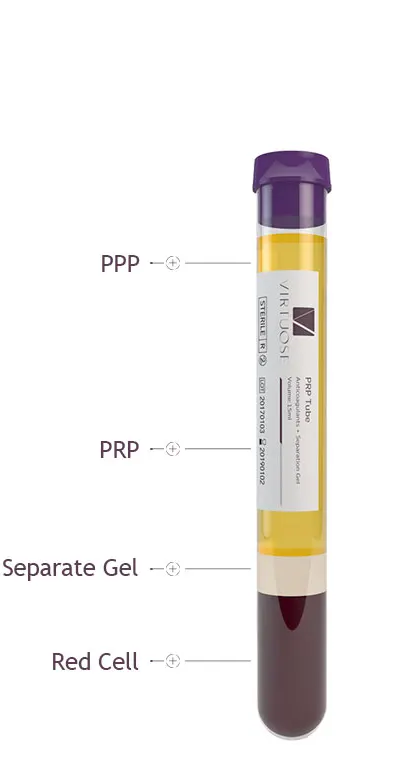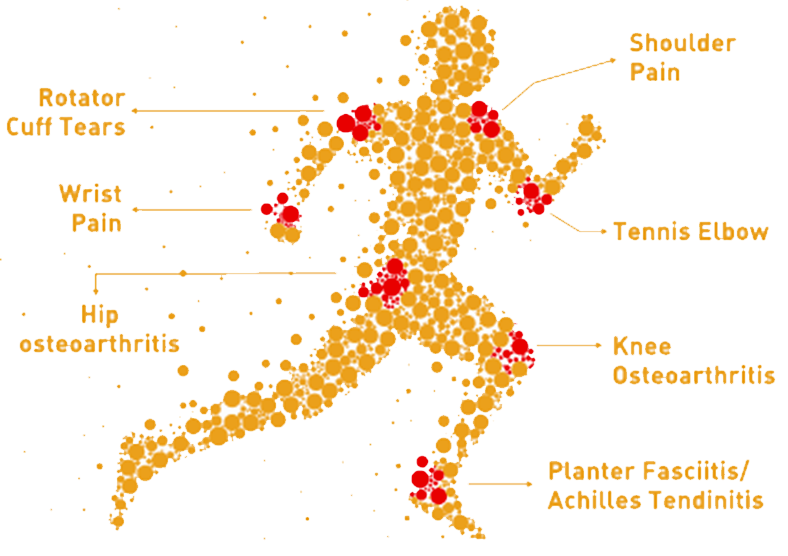Mitigate Pain Clinic – Dr Jeshnu Tople – Pain Management Specialist In Nagpur
PRP Treatment for Joint Pain Relief
Revive - Repair - Relieve
Discover the Benefits of Platelet Rich Plasma (PRP) Therapy
Introduction to Joint Pain Management
What is Platelet-Rich Plasma (PRP) Therapy?
How PRP Works in Pain Management
PRP therapy has gained recognition in treating various joint pain conditions due to its natural, minimally invasive approach. Here’s how it works:
Stimulation of Healing: Platelets release growth factors and cytokines, signaling the body’s repair mechanisms. This can reduce healing time for injuries such as tendonitis, ligament strains, and muscle tears.
Tissue Regeneration: PRP promotes the growth of new, healthy tissue, which is vital for recovery from degenerative conditions like osteoarthritis or cartilage damage.
Improved Blood Flow: The growth factors in PRP enhance blood flow to the injured site, which is essential for delivering oxygen and nutrients needed for tissue repair.

Painful Conditions Treated by PRP
At Mitigate Pain Clinic, we use PRP therapy to treat a wide range of musculoskeletal conditions, including:
Joint Pain due to ageing, injury or degeneration
Tendon Injuries such as
* Rotator cuff tendinitis
* Biceps tendinitis
* Tennis elbow
* Golfer’s elbow
* De Quervain’s tenosynovitis
* Achilles tendinitis
Ligament Injuries such as
* Anterior Cruciate Ligament (ACL)
* Posterior Cruciate Ligament (PCL)
* Anterior Talofibular Ligament (ATFL)
* Anterior Tibial Ligament (ATL)

Advantages of PRP Over Traditional Treatments
PRP offers several distinct advantages compared to traditional pain management techniques:
- Minimally Invasive requiring only needle prick
- Natural Healing as it uses your body’s own healing mechanisms
- Safe as it is derived from the patient’s own blood
- Complementary to Other Treatments such as physical therapy for enhanced results




PRP Therapy Procedure at Mitigate Pain Clinic
At Mitigate Pain Clinic, we follow a precise and patient-centered approach to PRP therapy:
- Consultation and Diagnosis: Before recommending PRP, we conduct a thorough evaluation to determine if you are a suitable candidate. This may involve imaging tests such as X-rays or MRIs.
- Blood Draw: A small sample of your blood is taken, typically from your arm. This is a quick and simple process.
- PRP Preparation: The blood is then placed in a centrifuge, which spins it at high speed to separate the platelets from other blood components.
- Injection: The PRP is injected directly into the affected area using imaging guidance such as sonography for precision. Local anesthesia may be used to minimize discomfort.
- Post-Procedure Care: After the injection, you may experience mild discomfort at the injection site, which subsides within a few days. You will be given specific instructions on activity modification and follow-up care.

Risks and Considerations of PRP Therapy
While PRP is generally considered safe, there are some potential risks and considerations:
Mild Discomfort: Temporary pain or swelling at the injection site may occur but typically resolves within a few days.
Variable Results: Not all patients respond to PRP in the same way, and outcomes may depend on the severity of the condition and overall health.
At Mitigate Pain Clinic, we ensure that patients are fully informed of both the benefits and potential risks before starting PRP therapy.

Conclusion
Platelet-Rich Plasma (PRP) therapy represents an exciting advancement in pain management. Its natural, minimally invasive approach, combined with its ability to harness the body’s own healing power, makes it a promising option for patients suffering from chronic pain or injury. At Mitigate Pain Clinic, we are dedicated to providing cutting-edge treatments that help our patients reclaim their quality of life.
If you are struggling with joint pain and are interested in exploring PRP therapy, contact us today to schedule a consultation. Let us help you on your journey to pain relief and improved function.
